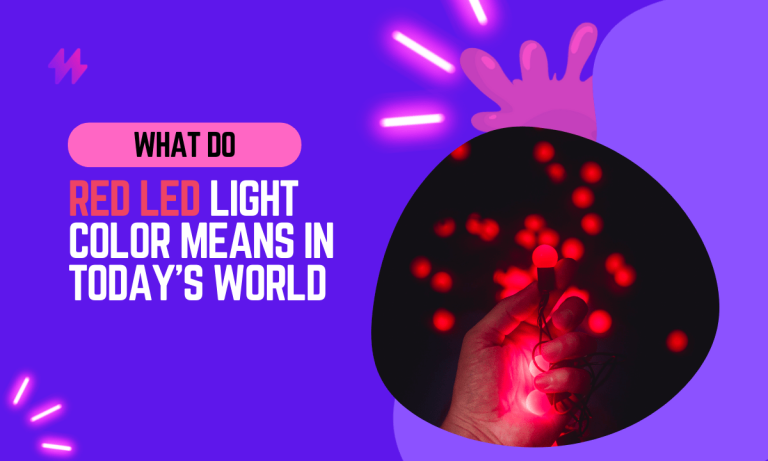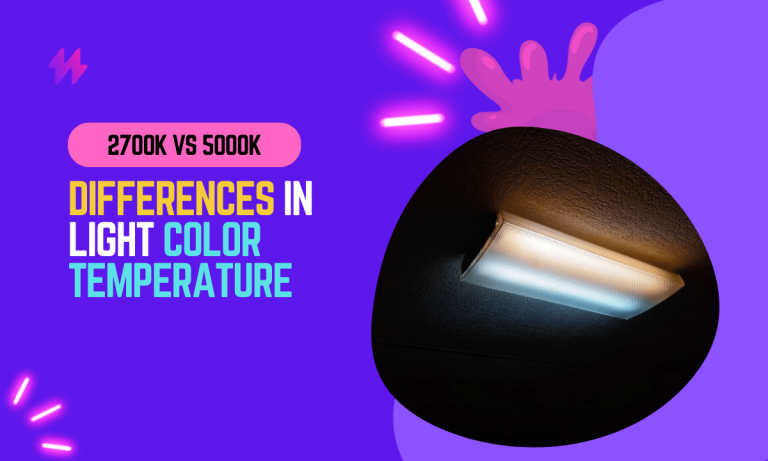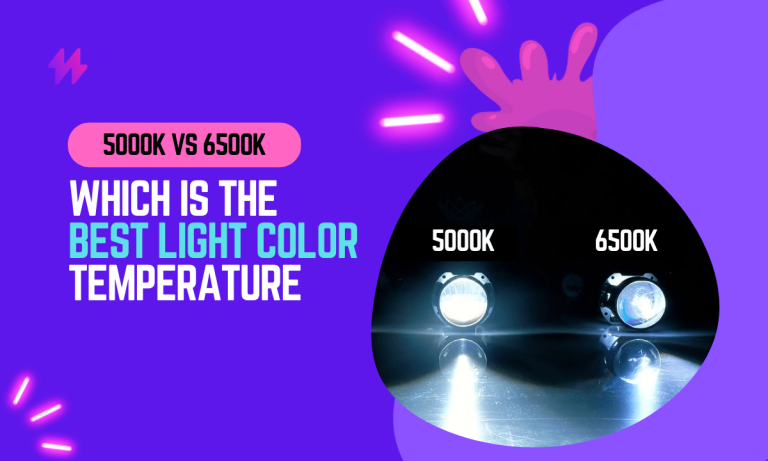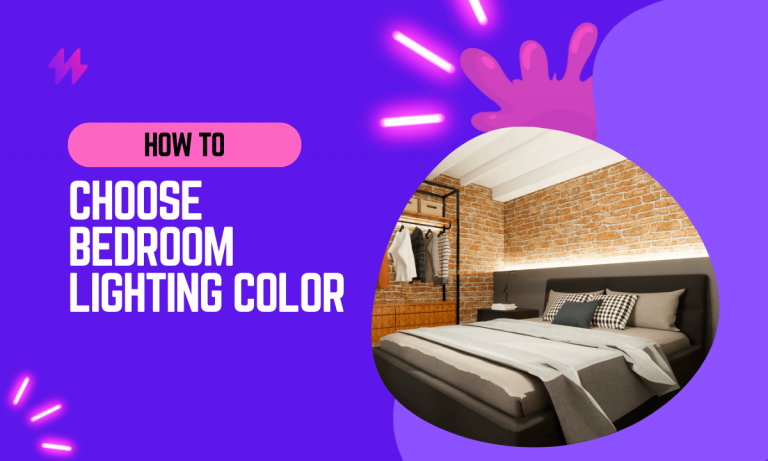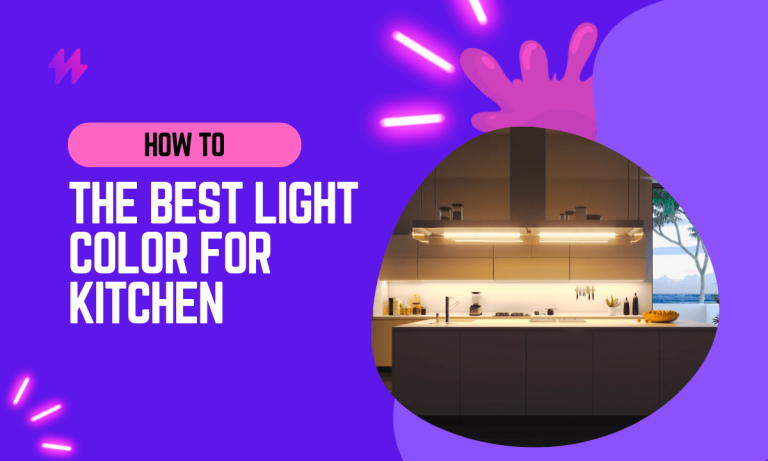How To Make A Light Bulb Less Bright Effectively?

Lighting plays a pivotal role in our daily lives. It can influence our mood, enhance the aesthetics of our spaces, and even affect our energy consumption. Yet, achieving the perfect lighting balance can sometimes feel like an elusive art form. This is where the power of dimming comes into play.
Dimming your light bulbs effectively can:
- Create Ambiance: It allows you to set the mood for any occasion, from a cozy evening to a vibrant social gathering. Dimming can transform a harshly lit room into an inviting sanctuary.
- Save Energy: By reducing the intensity of your light bulbs, you can significantly cut down on electricity consumption, contributing to both your wallet’s well-being and the planet’s health.
- Prolong Bulb Lifespan: Dimming can extend the life of your bulbs by reducing the wear and tear caused by constant full illumination.
- Personalize Your Space: It empowers you to customize your living environment to suit your unique preferences, whether you prefer a soft, warm glow or bright, focused lighting.
- Enhance Visual Comfort: Lowering the brightness can reduce eye strain and glare, making it easier to read, work, or relax.
In this comprehensive guide, we’ll explore various methods, tools, and techniques to effectively make a light bulb less bright. Whether you’re a homeowner, a renter, or someone simply looking to master the art of lighting, you’ll find valuable insights to illuminate your path to the perfect ambiance.
Also read: Why Do LED Lights Flicker on Video and Camera?
The choice of the right light bulb can significantly enhance the ambiance of your space. By selecting energy-efficient bulbs, such as led light bulbs or halogen light bulbs, you can create various lighting effects that suit your needs while reducing electrical power consumption.
Understanding Types of Bulbs and Dimming Compatibility: How to Make a Light Bulb Less Bright Effectively | Non-Dimmable Bulb Insights
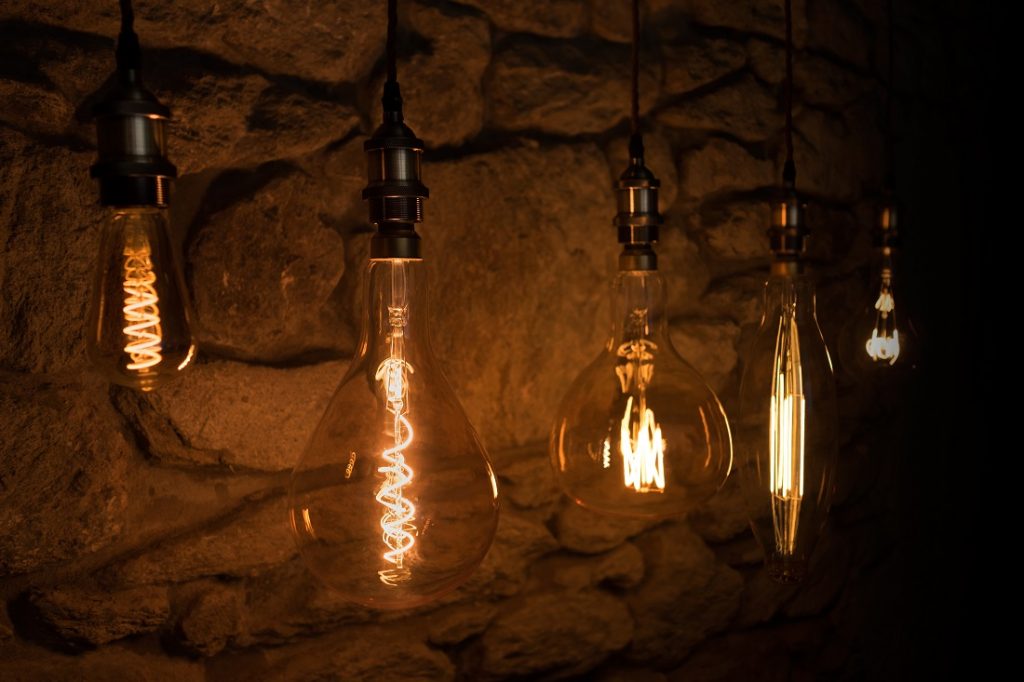
When it comes to dimming your light bulbs effectively, it’s crucial to understand the types of bulbs available and their compatibility with dimming systems. Each type of bulb has unique characteristics, and not all of them can be dimmed or dimmed easily.
When considering how to make a light bulb less bright effectively, it’s important to choose dimmers compatible with your light sources. Additionally, energy-efficient dimming systems can help maintain a desired brightness level while enhancing your overall light design with dynamic lighting effects.
Exploring Incandescent Bulbs: Dimming Compatibility and Usage
Incandescent bulbs are the traditional, classic bulbs that most of us grew up with. They are generally fully dimmable and have been used with dimmer switches for decades. Dimming an incandescent bulb is as simple as turning a dimmer switch’s knob or sliding a slider.
Incandescent bulbs, with their warm glow, are often favored for residential lighting due to their ability to create a cozy ambiance. While they are fully dimmable and easy to use, exploring new light bulb technologies like LED strip lights can offer even greater flexibility in light output and energy efficiency. Adopting such high-efficiency bulbs emit brighter light while providing indispensable energy savings.
Halogen Bulbs: Exploring Dimming Compatibility and Benefits
Halogen bulbs are an updated version of incandescent and share their dimming compatibility. They can be dimmed smoothly without issues. However, they are less energy-efficient compared to other modern options like LEDs. You may also like to read know which is better between Halogen and LED Light.
Halogen bulbs, while offering smooth dimming and compatibility with traditional dimmer switches, fall short in energy efficiency when compared to light-emitting diodes (LED). For those seeking optimal light bulb brightness, it’s essential to consider newer technology options that provide better lumens per watt, ensuring a bright ambience without excessive electricity consumption.
CFL (Compact Fluorescent) Bulbs: Understanding Their Dimming Compatibility and Options
CFL bulbs are more energy-efficient than incandescents but can be a bit trickier to dim. Not all CFLs are compatible with dimmer switches, so it’s essential to check the packaging for “dimmable” or “compatible with dimmer switches” labels. Even with dimmable CFLs, performance may vary, and some flickering or humming might occur.
CFL bulbs can provide a decent alternative to incandescent options for achieving energy savings in your daily lighting needs. However, if you’re looking to create more specialized lighting effects like accent lighting or a warm ambiance, exploring options like LED lights or even new holiday lights can offer enhanced versatility and efficiency.
LED (Light Emitting Diode) Bulbs: Types and Dimming Compatibility
LED bulbs have gained immense popularity due to their energy efficiency and long lifespan. They are also available in dimmable versions, but their dimming compatibility is more complex. Not all LED bulbs work with all dimmer switches. To ensure success, look for LED bulbs labeled “dimmable” and check the manufacturer’s recommendations for compatible dimmer switches.
The evolution in the “world of light” has led to many innovations such as energy-efficient fluorescent bulbs and light-emitting diode (LED) options that provide exceptional brightness while consuming fewer watts. As you explore different light colors and bulb types, consider that standard bulb choices like warm incandescent are still popular, but LED holiday lighting and color-changing technology can enhance your festive decor with their versatility and low voltage consumption.
Innovative Smart Bulbs for Enhanced Dimming Capabilities
Smart bulbs, including those using Wi-Fi or Bluetooth technology, often come with built-in dimming features that can be controlled through smartphone apps or voice assistants like Alexa or Google Assistant. These bulbs offer a high level of customization and can be programmed to adjust brightness based on schedules or activities.
Smart bulbs, including those using Wi-Fi or Bluetooth technology, often come with built-in dimming features that can be controlled through smartphone apps or voice assistants like Alexa or Google Assistant. These bulbs offer a high level of customization and can be programmed to adjust brightness based on schedules or activities. In addition, using a light bulb holder for these smart bulbs can enhance the functionality and aesthetic of your space. With the ability to measure brightness and utilize color temperature control, you can create a luminous lighting environment tailored to your needs.
Dimmable LEDs for Energy Efficiency: Exploring Bulb Types and Dimming Compatibility
If energy efficiency is a priority, consider dimmable LED bulbs. They consume significantly less energy than incandescent and last much longer. Additionally, they offer versatile options for color temperature, allowing you to customize the ambiance further.
When selecting a light bulb for security lighting, it’s crucial to consider options that ensure adequate visibility without creating an unsettling glow. Bright lights like LED holiday lighting can provide vibrant illumination while also utilizing low wattage, making them an efficient choice compared to conventional lights.
Dimmer Switches & Controls: Understanding Types and Dimming Compatibility
Dimmer switches are the secret sauce when it comes to controlling the brightness of your light bulbs effectively. These devices offer a wide range of options to fine-tune your lighting to perfection. Let’s delve deeper into the world of dimmer switches and controls:
Dimmer switches play a pivotal role in achieving the right light intensity without compromising on ambiance. By utilizing the correct lighting options, homeowners can avoid obnoxious device lamps while ensuring that their space remains inviting with a subtle dim glow.
Types of Dimmer Switches: Exploring Compatibility with Various Bulb Types
- Rotary Dimmers: These are some of the most basic and widely used dimmer switches. They typically feature a rotary knob that you can turn to adjust the brightness. Rotating the knob clockwise increases the brightness, while counterclockwise reduces it.
- Slide Dimmers: Slide dimmers have a slider bar that you move up or down to control the brightness. Many people find these switches intuitive and easy to use. Slide dimmers often have an additional on/off switch integrated into the design.
- Toggle Dimmers: Toggle dimmers look like standard toggle switches but come with a small slider or lever that you can move to adjust the brightness. They blend the familiarity of a traditional switch with dimming functionality.
- Smart Dimmers: Smart dimmer switches are the latest trend in lighting control. These devices connect to your home’s Wi-Fi network and can be controlled remotely through smartphone apps or voice assistants like Amazon Alexa or Google Assistant. They often offer features like scheduling, color temperature adjustment, and scene settings.
You may also like: How Bright is 300 Lumens?
Choosing the right light bulb can transform your ambiance with the correct color temperature control and energy efficiency. Additionally, opting for bright light bulbs, such as LED holiday lighting, ensures a vibrant atmosphere while keeping your energy consumption low, thanks to their efficient design and functionality.
Reducing Brightness: Methods to Make a Light Bulb Less Bright
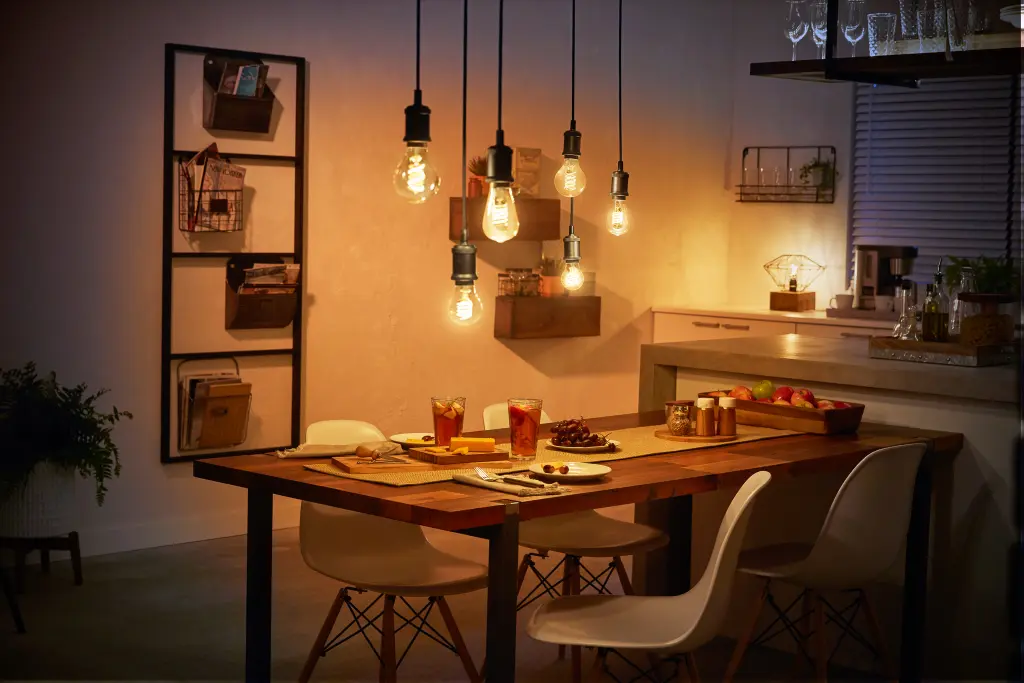
Now that you understand the importance of dimming and are equipped with the right bulbs and dimmer switches, let’s dive into the practical steps for making your light bulbs less bright effectively.
Now that you have a clear understanding of how different light bulbs contribute to your lighting experience, it’s vital to remember that standard incandescent bulbs can easily be replaced with more energy-efficient options. By utilizing dimmable lighting, you can adjust the brightness levels to create the perfect ambiance while prolonging the bulb life in your home.
Adjusting Dimmer Settings: Exploring Bulbs and Dimming Compatibility
- Turn On the Light: Start by turning on the light bulb you want to dim using the dimmer switch. Ensure the bulb is at full brightness initially.
- Locate the Dimmer Control: Identify the dimmer control on your dimmer switch. Depending on the type of switch you have (rotary, slide, toggle, or smart), this could be a knob, slider, lever, or a digital interface in the case of smart dimmers.
- Gradual Adjustment: Begin making adjustments to the dimmer control. If it’s a rotary or slide dimmer, slowly turn or slide it in the direction that decreases brightness (usually counterclockwise for rotary and downward for slide). For smart dimmers, use the accompanying app or voice commands to reduce brightness incrementally.
- Find the Right Brightness Level: Continuously monitor the light’s output as you adjust the dimmer control. Stop at the desired brightness level, whether it’s a soft glow for relaxation, a cozy ambiance for a romantic dinner, or a bright reading light.
- Test Different Scenarios: Experiment with different brightness settings to see what works best for various activities and times of day. Dimming is all about personalization, so don’t be afraid to fine-tune the settings to your liking.
Optimizing Light Intensity: Using Dimmable Bulbs for Enhanced Control
- Check Compatibility: Ensure you have dimmable light bulbs that are compatible with your dimmer switch. Refer to the manufacturer’s recommendations for compatibility or check the bulb packaging for “dimmable” labels.
- Replace Non-Dimmable Bulbs: If you have non-dimmable bulbs installed, you’ll need to replace them with dimmable alternatives. Follow the manufacturer’s instructions for bulb replacement, and make sure to turn off the power to the fixture before installation.
- Follow Dimming Steps: Once you have dimmable bulbs in place, follow the previous steps for adjusting dimmer settings to achieve your desired brightness level.
Lamp Shades and Diffusers: Enhancing Your Lighting Experience
- Choose Appropriate Shades: Lamp shades can help diffuse and soften the light emitted by the bulb. Select a lamp shade that complements your decor and provides the level of diffusion you desire. Light-colored shades tend to create a softer ambiance.
- Consider Diffusers: For even greater light diffusion, consider adding diffusers to your light fixtures. Diffusers are typically made of materials like frosted glass or fabric and can be attached to the bottom of a fixture or the top of a lampshade.
- Customize the Effect: Play around with different shades and diffusers to see how they affect the quality of light. You can achieve various lighting effects, from a gentle, warm glow to a soft, ambient illumination.
Remote and Smart Dimming Techniques for Enhanced Lighting Control
- Setup and Pairing: If you have a remote or smart dimmer, follow the manufacturer’s instructions to set it up and pair it with your light fixtures. This typically involves connecting the dimmer to your home’s Wi-Fi network.
- App Control: Use the accompanying app to control the brightness of your light bulbs. You can often create presets for different scenarios, making it easy to adjust the lighting with a tap on your smartphone.
- Voice Commands: If your smart dimmer supports voice commands, integrate it with your preferred voice assistant (e.g., Alexa, Google Assistant) and use simple voice commands to adjust the brightness.
- Schedule and Automation: Take advantage of scheduling features to automate your lighting. Set specific brightness levels for different times of the day or activities, such as gradually dimming the lights in the evening for a calming effect.
Also read: What Is the Best LED Light Color for Gaming?
By incorporating innovative light bulb designs such as LED holiday lighting, you can achieve energy efficiency while adding aesthetic value to your space. Additionally, utilizing energy-efficient products like energystar-qualified lighting allows you to measure brightness and optimize the light appearance for different settings, ensuring a comfortable environment for your eyes.
Final Thoughts and Conclusion on Bulb Types and Dimming Compatibility
In conclusion, effectively reducing the brightness of a light bulb is essential for creating a comfortable ambiance in your living or working spaces. The discomfort from overly bright lighting can be mitigated through a variety of methods that are both simple and effective. One such method is the installation of a dimmer switch, which allows for adjustable light levels according to specific needs and preferences. Dimmer switches are particularly useful as they provide continuous control over lighting intensity, making it possible to fine-tune the ambiance of a room with precision. Alternatively, opting for lower wattage bulbs or those designed with built-in dimmable features can achieve a similar effect without the need for additional installations.
Moreover, for situations where changing fixtures or wiring is impractical, applying a less permanent solution like using lampshades or diffusers can also soften the light effectively. These accessories not only reduce glare but also enhance the aesthetic appeal of the light fixtures. Lampshades come in various materials and designs, offering an opportunity to add a decorative touch while controlling brightness. Another practical approach is the strategic placement of furniture and decor to obstruct or filter the direct light, thus softening its impact on the overall space. By employing these techniques, one can achieve the desired level of brightness without compromising on comfort or functionality, ensuring that the lighting in any environment is both practical and pleasant.
How To Make A Light Bulb Less Bright Effectively | Practical Techniques for Reducing Brightness
Utilizing lamp shades effectively is a practical technique for tackling the problem of too-bright bulbs. A well-chosen lamp shade can diffuse the harshness of a lightbulb, transforming continual bright light into a warm glow. Translucent shades provide a softer appearance by dispersing light more evenly throughout the room. For those feeling creative, using glass paints or light glass coatings can help customize the brightness and color of an entire bulb. This can be particularly useful with LED holiday lighting, where color-shifting capabilities allow users to adjust the ambiance. Also, employing light bulb holders designed for dimmer lights lets you control the intensity of luminous lighting. By focusing on watts, specifically choosing bulbs that measure energy in few watts while still delivering helpful watts, achieving the desired light kelvin scale becomes possible. Ultimately, mastering how to make a light bulb less bright effectively can enhance your space’s aesthetic while keeping the same brightness level you desire.
How To Make A Light Bulb Less Bright Effectively | Utilizing Lamp Shades Effectively
Utilizing lamp shades is a practical way to manage the intensity of a light bulb effectively. A well-chosen lampshade can diffuse the white light appearance produced by single-temperature bulbs, softening the overall brightness. For example, a fabric shade can reduce glare while enhancing the ambiance of the room. This technique proves useful when dealing with LED holiday lighting or table lamps that might otherwise emit light at full brightness. The material and color of the shade will play a vital role in determining how much light is softened.
Choosing shades with varying opacities can further enhance control over brightness. Shades that are darker or thicker tend to absorb more light, creating a subtle glow rather than an overpowering beam. Color-changing technology lets users adjust their lighting to suit different moods, enabling a range of settings with a single power source. For those looking to create a calming environment, this approach is a simple yet effective way to measure energy and achieve a pleasing atmosphere while learning how to make a light bulb less bright effectively.
Employing Diffusers for Softened Light
Diffusers are a practical solution for those seeking ways on how to make a light bulb less bright effectively. These devices scatter the light emitted from bulbs, thereby reducing harshness and creating a more inviting atmosphere. Whether using them on LED holiday lighting or standard light strings, diffusers play a crucial role in softening the brightness. They allow for the light’s color shifting to be more prominent, resulting in enhanced aesthetics for any setting.
Choosing the right diffuser is essential, as different materials can affect the extent of light softening. For instance, materials like frosted glass or fabric can significantly reduce the brightness while maintaining the desired ambiance. It is also helpful to consider how many watts measure energy consumed by the bulb being used. By calibrating the brightness through diffusers, users can create a comfortable environment without drastically increasing energy consumption.


